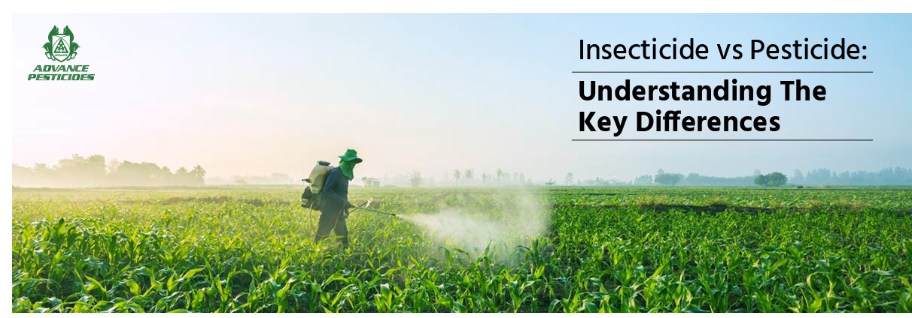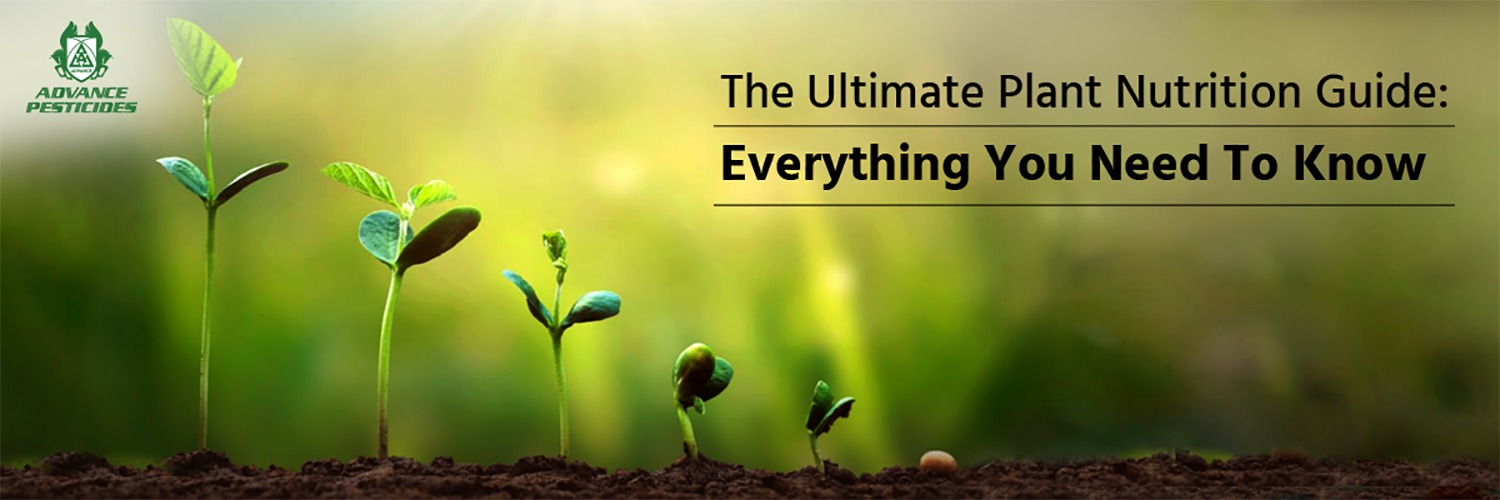Insecticides: Overview, Types, Uses and Benefits - A Comprehensive Guide

Insecticides are a crucial arsenal in the battle against pests that threaten crops, health, and the environment. These chemical compounds are specifically designed to control and eliminate harmful insects, safeguarding agricultural produce and promoting public health. Insecticides play an integral role in pest management strategies, offering targeted solutions to various insect-related challenges. Different Types of Insecticides In the world of pest management, a diverse array of insecticides exists to tackle the various challenges posed by insect pests. These insecticides can be categorized based on their chemical nature, mode of action, target insects, and more. Let's explore the different dimensions of insecticides to gain a comprehensive understanding of their classifications and uses. Insecticides are often classified based on their chemical composition and origin. This classification provides insights into the diversity of compounds utilized to combat insect pests. 1. Synthetic: insecticides are chemically formulated compounds developed to combat insect pests efficiently. They are further categorized into different types, each with unique properties and modes of action. 2. Organophosphates: These insecticides disrupt the nervous systems of insects, causing paralysis and ultimately leading to death. They are effective against a wide range of pests but require careful handling due to their toxicity to humans and animals. 3. Pyrethroids: Pyrethroids are synthetic compounds derived from natural pyrethrins found in chrysanthemum flowers. They act by affecting insect nerve cells, leading to paralysis and death. Pyrethroids are commonly used in household insecticides and agricultural applications. 4. Neonicotinoids: Neonicotinoids target insect nervous systems, resulting in paralysis and death. They are often used as seed treatments and are systemic, meaning the plants absorb and distribute the chemical throughout their tissues. Natural insecticides have emerged as a promising avenue in the quest for environmentally friendly pest management solutions. Derived from organic sources, these compounds offer a sustainable alternative to conventional synthetic insecticides. Let's explore the types of natural insecticides and delve into their unique attributes and applications. 1. Botanical Insecticides: Derived from plant extracts, botanical insecticides offer a more environmentally friendly alternative. Examples include neem oil, pyrethrin, and rotenone. These compounds have minimal impact on non-target organisms and degrade more rapidly in the environment. 2. Microbial Insecticides: These insecticides consist of microorganisms, such as bacteria, viruses, and fungi that infect and kill specific pests. Bacillus thuringiensis (Bt) is a well-known microbial insecticide, targeting caterpillars and other leaf-eating insects. Insecticides are not one-size-fits-all solutions; they come in various forms tailored to different pest control needs. One key aspect that distinguishes them is their mode of activity. Some insecticides exert their effects upon direct contact, while others operate systemically, impacting pests that consume treated plants. Insecticides can be classified based on their activity against pests: 1. Contact Insecticides: These insecticides are effective upon direct contact with the target insect. They act quickly but may require reapplication as they have limited residual activity. 2. Systemic Insecticides: Systemic insecticides are absorbed by plants and spread throughout their tissues. Insects feeding on treated plants ingest the insecticide, resulting in their demise. The world of insects is incredibly diverse, with various species posing distinct challenges in different contexts. Insecticides have been developed to address these challenges by targeting specific groups of insects. Insecticides can be categorized based on the types of insects they target: 1. Broad-Spectrum Insecticides: These insecticides are designed to control a wide range of insect pests. While effective, they can also harm beneficial insects and disrupt ecosystems. 2. Narrow-Spectrum Insecticides: Narrow-spectrum insecticides target specific groups of insects, minimizing harm to non-target species. This precision aids in pest management while preserving beneficial insects. The effectiveness of insecticides relies not only on their chemical composition but also on the method by which they are applied. Different situations call for different application techniques to ensure optimal coverage and pest control. Insecticides can be applied using various methods: 1. Foliar Sprays: These insecticides are applied directly to the foliage of plants, targeting pests that feed on leaves. 2. Soil Drenches: Insecticides are applied to the soil, where they are taken up by plant roots and translocated throughout the plant. 3. Seed Treatments: Insecticides are applied to seeds before planting, providing protection as the plant grows. The safety of both humans and the environment is paramount in the use of insecticides. To address this concern, insecticides can be categorized based on their toxicity levels. This classification provides insights into the potential risks associated with different compounds and helps guide the selection of appropriate insecticides for various applications. Insecticides vary in their toxicity levels to humans and animals: 1. Low Toxicity Insecticides: These insecticides have minimal impact on human health and the environment. They are often used in integrated pest management (IPM) strategies. 2. Moderate Toxicity Insecticides: While effective against pests, these insecticides require cautious application due to their potential harm to humans, animals, or non-target organisms. 3. High Toxicity Insecticides: These insecticides are potent and should be used with utmost care. They are effective against a wide range of pests but pose higher risks to humans and the environment. Insecticides play a pivotal role in various sectors, safeguarding crops, public health, and the environment from the detrimental effects of insect pests. Their versatile applications extend across agriculture, pest control, horticulture, floriculture, and even household settings. Here is how they contribute in various fields - Insecticides come in a multitude of formulations, each tailored to specific application methods and scenarios. These formulations determine how insecticides are prepared, applied, and interact with the target pests and the environment. They are available in various formulations to suit different application methods: The use of insecticides is regulated by the Insecticides Act of 1968 and the Insecticides Rules of 1971. These regulations ensure safe handling, storage, and application of insecticides to minimize risks to humans, animals, and the environment. Explore the contrasting realms of insect control. Delve into the nuances that differentiate traditional insecticides from the innovative approach of Insect Growth Regulators (IGRs), revolutionizing pest management strategies. Category Insecticides Insect Growth Regulators (IGRs) Mode of Action Insecticides typically work by affecting the nervous system, respiratory system, or other vital physiological processes of insects, causing paralysis or death upon exposure. IGRs interfere with the hormonal regulation of insect growth and development. They disrupt processes such as molting, metamorphosis, and reproduction, leading to incomplete development or non-viable offspring. Target Organisms Insecticides are broad-spectrum or narrow-spectrum, targeting a wide range or specific types of insects, respectively IGRs are usually more specific in their action, affecting insects that undergo metamorphosis, such as beetles, butterflies, and flies. Action Period The action of insecticides can vary, with some providing immediate effects upon contact and others having residual activity for an extended period. IGRs often have a prolonged action period, affecting the targeted insect's development over multiple life stages. Target Life Stages Insecticides can target various life stages of insects, depending on their mode of action. Some affect adults, while others may be more effective against larvae. IGRs primarily target juvenile stages of insects, such as larvae and nymphs, disrupting their growth and development. Persistence The persistence of insecticides in the environment can vary. Some break down quickly, while others remain active for longer periods. IGRs tend to persist longer in the environment due to their specific mode of action, which affects insect development over time. Toxicity to Humans Insecticides can range from low to high toxicity to humans, depending on the chemical composition. Some require careful handling and protective measures during application. IGRs generally have lower toxicity to humans compared to conventional insecticides, making them potentially safer for use. Impact on Beneficial Insects Conventional insecticides can have negative impacts on beneficial insects like pollinators and natural predators, leading to disruption of ecosystems. IGRs may have a more targeted impact, affecting only specific insect species, thus potentially minimizing harm to beneficial insects. Application Flexibility Insecticides offer flexibility in application methods, such as foliar sprays, soil drenches, or seed treatments, allowing adaptation to different pest management strategies. IGRs are typically applied using similar methods as conventional insecticides, offering similar levels of flexibility. Resistance Development Over time, insects can develop resistance to certain insecticides due to their direct mode of action. This can lead to decreased effectiveness. IGRs can also lead to resistance in insects if used extensively and without proper management strategies with lower likelihood of resistance development compared to traditional insecticides. Examples Pyrethroids (e.g., permethrin, cypermethrin) Organophosphates (e.g., malathion, chlorpyrifos) Neonicotinoids (e.g., imidacloprid, clothianidin) Methoprene Pyriproxyfen Diflubenzuron Distinguishing between insecticides and pesticides is a crucial step in understanding the nuances of pest management. While both terms are frequently used interchangeably, they encompass different realms within the field of pest control. Insecticides, a subset of pesticides, are specifically formulated to target and combat insect pests that threaten crops, public health, and the environment. They zero in on the world of insects, tailoring their effects to the diverse array of insect species that inhabit our ecosystems. On the other hand, pesticides encompass a broader category, encapsulating various chemical agents designed to mitigate a wider spectrum of pests. This umbrella term includes insecticides, herbicides, fungicides, and more, each with its distinct purpose and mechanism of action. Thus, comprehending the difference between these terms is essential for developing effective pest management strategies that address the unique challenges posed by different types of pests. Got questions about insecticides? We've got you covered. Q1. How Often to Spray Insecticide on Plants? Effective application intervals vary based on factors like plant type, pest severity, and product instructions. Regular monitoring and adjusting as needed ensure optimal protection. Q2. How Do Insecticides Protect Crops? Insecticides target and eliminate harmful pests, curbing infestations that can damage crops. They disrupt pests' physiological processes or act as barriers, safeguarding yields. Q3. Can I Apply Insecticide and Fertilizer Simultaneously? While combining insecticides and fertilizers might seem convenient, it's advisable to apply them separately. This prevents potential chemical interactions and ensures maximum efficacy. Q4. Are Insecticides Harmful to Humans? Properly used, insecticides pose minimal risk to humans. Adhering to safety guidelines, wearing protective gear, and opting for low-toxicity options can further reduce any potential harm. Q5. Can You Mix Insecticide and Herbicide? Mixing insecticides and herbicides isn't recommended. These compounds target different types of pests and plants, and combining them may lead to reduced effectiveness or unintended consequences. As we wrap up our exploration into the diverse world of insecticides and pest management, it's evident that these compounds play a pivotal role in safeguarding crops, ecosystems, and human health. Through a nuanced understanding of their types, applications, and interactions, we equip ourselves with the knowledge to make informed decisions that strike a balance between agricultural productivity and environmental sustainability. The evolving landscape of insecticides continues to inspire innovative approaches, reminding us of the ongoing quest to harmonize effective pest control with the well-being of our planet. Elevate your agricultural endeavours with our premium insecticides, meticulously designed to ensure the vitality of your crops. Backed by cutting-edge research and proven efficacy, our range offers a comprehensive solution to combat pests while upholding environmental responsibility. From enhancing yields to fostering sustainable growth, our insecticides stand as your steadfast partners in nurturing healthier, more bountiful harvests. Experience the difference in crop protection – try our insecticides and cultivate with confidence. What Are Insecticides?
1. Classification of Insecticides Based on Chemical Nature
A. Synthetic Insecticides:
B. Natural Insecticides
2. Classification of Insecticides Based on Activity
3. Classification of Insecticides Based on Target Insects
4. Classification of Insecticides Based Application Method
5. Classification of Insecticides Based on Toxicity
Exploring the Applications of Insecticides
Varied Formulations of Insecticides: Tailoring Solutions for Different Needs:
Advantages of Insecticides in Agriculture: Nurturing Bountiful Harvests
Systematic Approach to Choosing the Right Insecticide
Safety and Prevention Regulations for Insecticides
Difference Between Insecticides and Insects Growth Regulators (IGR)
Difference Between Insecticides and Pesticides
FAQ about Insecticides
Conclusion
Guard Your Crops with Confidence: Try Our Insecticides!




